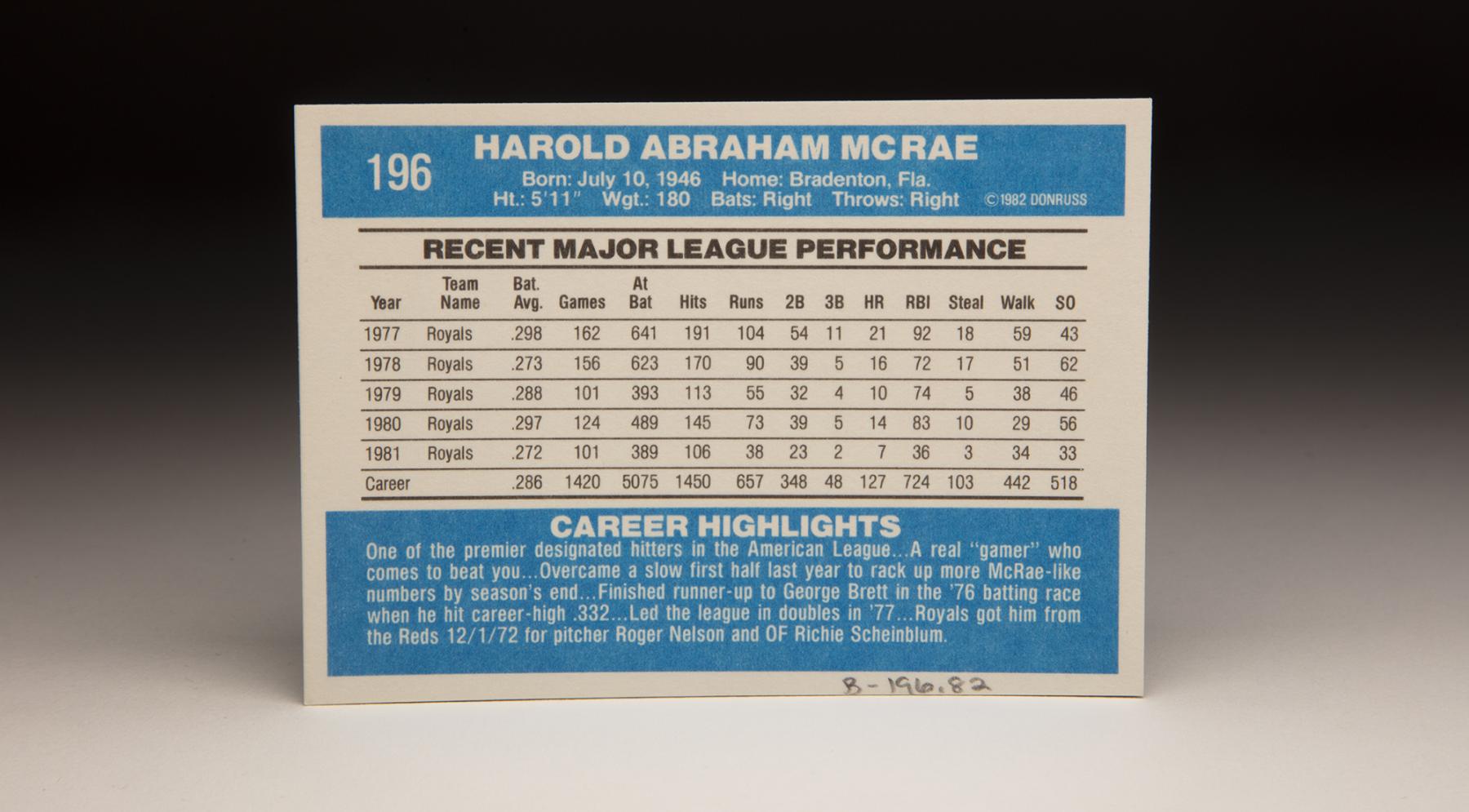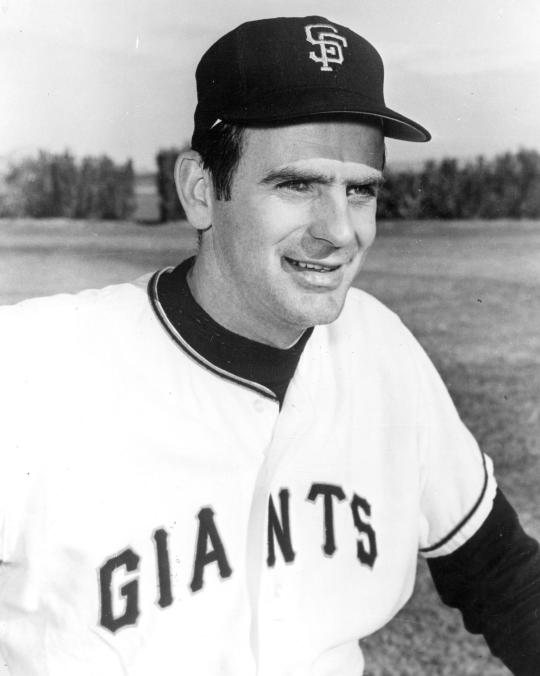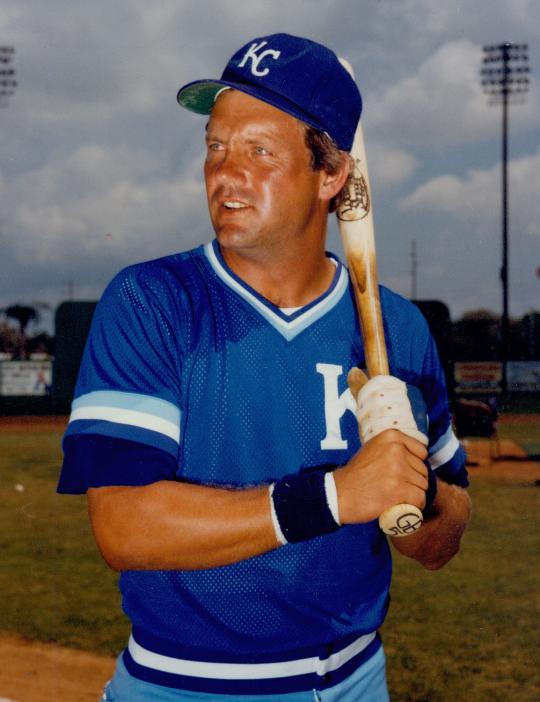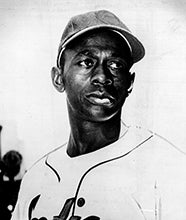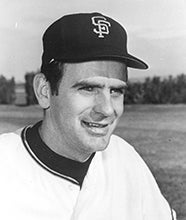- Home
- Our Stories
- #CardCorner: 1982 Donruss Hal McRae
#CardCorner: 1982 Donruss Hal McRae
On Aug. 16, 1982 – in the second game of a double-header against the Yankees – Royals designated hitter Hal McRae belted a two-run home run off New York reliever Lynn McGlothen into the left field stands in the Bronx, scoring U.L. Washington.
It was the 99th and 100th RBI of the season for McRae, who was on his way to one of the most productive seasons ever by a designated hitter.
“I’ve got to put some good numbers on the board this year,” the 36-year-old McRae told the Tallahassee Democrat that summer before his impending free agency that winter. “This is my last chance.”
Fortunately for McRae and the Royals, the man who was one of the top DHs of his time still had plenty of playing time left – and helped Kansas City win its first World Series title three years later.
Official Hall of Fame Merchandise
Hall of Fame Members receive 10% off and FREE standard shipping on all Hall of Fame online store purchases.
Born July 10, 1945, in Avon Park, Fla., Harold Abraham McRae was one of 10 children. His father, a former player, coached McRae in amateur league baseball. And with four brothers and almost a dozen cousins living in the same neighborhood, McRae was constantly on the diamond.
After graduating from Douglas High School in Sebring, Fla., McRae enrolled at Florida A&M University in Tallahassee, where he played both football – he scored 18 touchdowns as a halfback in his senior season – and baseball. But he quickly demonstrated that his future was with the National Pastime, starring at shortstop for the Rattlers and displaying uncommon power for a 5-foot-11 middle infielder.
“He had the quickest bat I have ever seen,” Florida A&M coach Costa Kittles told the Democrat of McRae. “I can remember several scouts saying he would not make it to the majors, but Hal was just determined to succeed. He must have ended up hitting about .345, and he was a consistent doubles and triples hitter.”
The Cincinnati Reds selected McRae in the sixth round of the inaugural MLB Draft in 1965 – the same draft that brought Bernie Carbo (first round) and Johnny Bench (second round) to Cincinnati. McRae played in a handful of games for Class A Tampa of the Florida State League in 1965, then hit .287 a year later as a second baseman with the Class A Peninsula Grays of the Carolina League.
On June 21, 1966, Satchel Paige – about two weeks shy of his 60th birthday – pitched two innings for the Grays in what is considered to be his last appearance as a professional in a league game.
“We were all thrilled to meet him and hear the stories,” McRae told the Daily Press in Newport News, Va., in 1994.
McRae earned an invitation to the Reds Spring Training camp in 1967 and began the season with Double-A Knoxville before earning a mid-season call-up to Triple-A Buffalo. McRae hit three homers in one game for the Bisons on July 11 and finished the year with a .267 average, 16 homers and 59 RBI in 124 games across the two levels.
Still a second baseman, McRae was invited to the Florida Winter Instructional League following the 1967 season, then made a huge impression in Spring Training of 1968, hitting .341. But with All-Star Tommy Helms ensconced at second base, McRae was ticketed for Triple-A Indianapolis.
“I know I’ve had a good spring,” McRae told the Tampa Tribune. “But I know I can’t do enough to make it.
“I don’t want to be anybody’s utility man. I’m a second baseman.”
McRae was hitting .284 with 24 doubles, 11 home runs and 42 RBI through 73 games in Triple-A when the Reds brought him to Cincinnati on July 11, 1968 – just days after right fielder Pete Rose suffered a fractured thumb and Helms was called to a two-week tour of duty with the Marines. He debuted that night with two hits in four at-bats off future Hall of Famer Gaylord Perry of the Giants, handling seven chances flawlessly at second base.
“I didn’t know what to say,” McRae told the Cincinnati Enquirer, recalling the moment Indianapolis manager Don Zimmer told him he was headed to the big leagues.
McRae was returned to the minors two weeks after his debut before being recalled when rosters expanded in September. He got regular work at second base down the stretch, finishing with a .196 average in 17 games for the Reds.
But following the season, McRae fractured his leg in four places playing winter ball in Puerto Rico – trying to knock the ball loose from a catcher on a play at the plate. He was not ready for game action until early August of 1969, when he was placed on the Indianapolis active roster.
“It almost ended my career,” McRae said. “But it didn’t affect the way I play.”
McRae played in just 17 games for the Indians in 1969, then returned to the instructional league following the season and hit .369. Due to his diminished mobility following the broken leg, McRae was now an outfielder – but he made the Reds’ Opening Day roster in 1970.
In 70 games that season, McRae hit .248 with eight homers and 23 RBI as Cincinnati won the NL pennant. McRae started three games in left field in the World Series, hitting .455 (5-for-11) with three RBI as Baltimore defeated Cincinnati in five games.
But with a deep lineup and a minor league system teeming with talent, the Reds had no regular spot for McRae in 1971 or 1972. He hit .264 with 24 doubles in 99 games in ’71 and then batted .278 in 61 games a year later, hitting .444 (4-for-9) in the Reds’ World Series loss to the Athletics.
Following that season, the Reds traded McRae and Wayne Simpson to the Royals for Roger Nelson and Richie Scheinblum. It would be a trade that would help remake Kansas City into one of the dominant teams of the next decade.
“(McRae) has a good bat and he needs to play every day,” Royals general manager Cedric Tallis told the Kansas City Times following the trade. “I can see him hitting 15, 20 or even 25 home runs a season. He’s the big man in the deal.”
The timing was perfect for McRae and the Royals, as the American League instituted the designated hitter for the 1973 season. McRae – like many players – was hesitant at first to accept what seemed to be a part-time role. He played 63 games in right field in 1973 and 37 more at DH, hitting .234 with nine homers and 50 RBI.
But in 1974, McRae finally found his footing – hitting .310 with 15 homers, 36 doubles and 88 RBI in a career-high 148 games – including 90 at DH.
And though he played 114 games in left field in 1975 – hitting .306 with five homers and 71 RBI while earning his first All-Star Game selection – McRae soon settled into the role he seemed born to play.
“I love to hit. That’s my game now,” McRae told Gannett News Service.
In 1976, the young Royals claimed their first American League West title – but the final weekend of the season featured more individual than team drama. Heading into the final day of the season, the Royals had clinched first place but the AL batting title was a locked in a heated three-way race between McRae (hitting .33078), teammate George Brett (.33073) and the Twins’ Rod Carew (.32928) – with the Royals hosting the Twins for the final game.
Going into the bottom of the ninth, both McRae and Brett were 2-for-3 at the plate, leaving McRae at .3326 and Brett at .3322. Carew was 2-for-4 to raise his average to .331, but the Twins led 5-2 and Carew would only hit again if the game went to extra innings.
With one out in the ninth, Brett hit a seemingly playable fly ball to left field. But Minnesota’s Steve Brye misjudged the ball – and it skipped past him to give Brett an inside-the-park home run. McRae followed, needing a hit to win the batting title – but he grounded out to shortstop, leaving Brett at .333 and McRae at .332 in one of the closest three-way races ever.
Following the groundout, McRae gestured at Twins manager Gene Mauch, indicating he thought that Mauch had ordered Brye to let the ball drop. Both men had to be restrained as the teams charged the field.
Mauch denied all the allegations. Brett, however, wasn’t so sure.
“I thought (Brye) let it drop,” Brett told the Associated Press after the game.
The Royals, however, closed ranks and remained focused heading into the ALCS, losing a classic five-game battle to the Yankees.
The next season, McRae played in 162 games – 115 at DH – and hit .298 with 21 homers, 54 doubles and 92 RBI. The Royals repeated as AL West winners but again lost the ALCS vs. the Yankees – this time as McRae hit .444 with three doubles and six runs scored. In Game 2, McRae took out Yankees’ second baseman Willie Randolph with a rolling block to break up a potential double play in the sixth inning, allowing Freddie Patek to score all the way from second to tie the game at 2 in a game New York eventually won 6-2.
The play was legal at the time, but soon MLB changed the rules to say that on any slide into second base a runner must be able to tag the base or else the play is immediately dead. The change became known as the “Hal McRae Rule.”
“Mac is of the old school,” former Royals teammate Dave Nelson told the Chicago Sun-Times. “He’s a 1930s player in the 1980s, a throwback to the era of Ty Cobb and Babe Ruth, the era of rock ’em sock ’em baseball. Not many guys play like that anymore.”
McRae and the Royals again reached the ALCS in 1978 and again lost to New York. Then after hitting .288 in 1979, McRae helped Kansas City finally get over the hump in 1980 – hitting .297 with 83 RBI as the Royals won the AL pennant before losing the Philadelphia in the World Series.
McRae would hit .272 with 36 RBI in the strike-shortened 1981 campaign. Following that season, McRae hurt his knee while playing exhibition games with the Royals in Japan. He rehabbed himself with home-designed exercises and running, shedding 20 pounds and reporting to Spring Training in 1982 in the best shape of his career.
His newfound fitness – combined with the fact that McRae was entering the final year of his contract – sharpened his focus to a laser-like quality in 1982.
Following the 1976 season, McRae signed a five-year deal worth $1 million. But by the time of the deal’s final year in 1982, McRae was making just $225,000 and felt underappreciated.
“There are some things that I have not liked about my situation here,” McRae said during the 1982 season when he turned 37 years old. “(But) if I can get a real good season, I could get a two-year contract, which is just about how long I’d like to play.”
Turns out, McRae and the Royals agreed on a three-year deal worth $1.8 million that carried him through the 1985 campaign.
McRae credited Royals hitting coach Rocky Colavito with helping him find another gear at age 37 in 1982 when he consistently hit the ball to the opposite field.
“I can talk and talk to him but I can’t go to bat for him. He had to do that,” Colavito told Gannett News Service. “Mac and I had some damn good discussions about hitting. Hell, he could always hit. I just worked on some things with him.”
McRae finished the 1982 season with big league-leading totals in doubles (46) and RBI (133). It marked the highest-ever RBI mark for a DH to that point and was just the seventh time that any player had reached 133 RBI since the pitcher’s mound was lowered in 1969.
McRae hit .311 with 12 homers and 83 RBI in 1983, then transitioned into a part-time role. In 1985, McRae drove in 70 runs in 112 games as the Royals again advanced to the World Series. This time, Kansas City and McRae captured their elusive ring when the Royals defeated the Cardinals in seven games.
With McRae’s career winding down, the Royals released him on July 21, 1987 and immediately made him their batting coach.
“I was masquerading as a player,” McRae said of his final season. “I’m OK. I’ll survive.”
McRae served as the Pittsburgh Pirates hitting coach in 1988 and 1989 then moved onto Montreal in the same capacity, earning the reputation as a top managerial candidate. On May 24, 1991 – after dismissing John Wathan – the Royals named McRae as their manager.
“I think a lot of Hal McRae,” said Royals owner Ewing Kauffman. “He’s got the intensity and drive that would be wonderful for us.”
McRae managed the Royals through the 1994 season, finishing above .500 in three of his seasons and writing the name of his son, Brian McRae, in the lineup each year. He managed Tampa Bay in 2001 and 2002 with stints in between as hitting coach for the Reds and Phillies. He later worked with Tony La Russa as the Cardinals hitting coach before retiring from the game.
McRae finished his 19-year playing career with a .290 batting average, 2,091 hits, 484 doubles, 1,097 RBI and three All-Star Game selections.
“When you play against him, you detest him,” La Russa said in 1982. “But you would love to have him on your side.”
Craig Muder is the director of communications for the National Baseball Hall of Fame and Museum
Related Stories
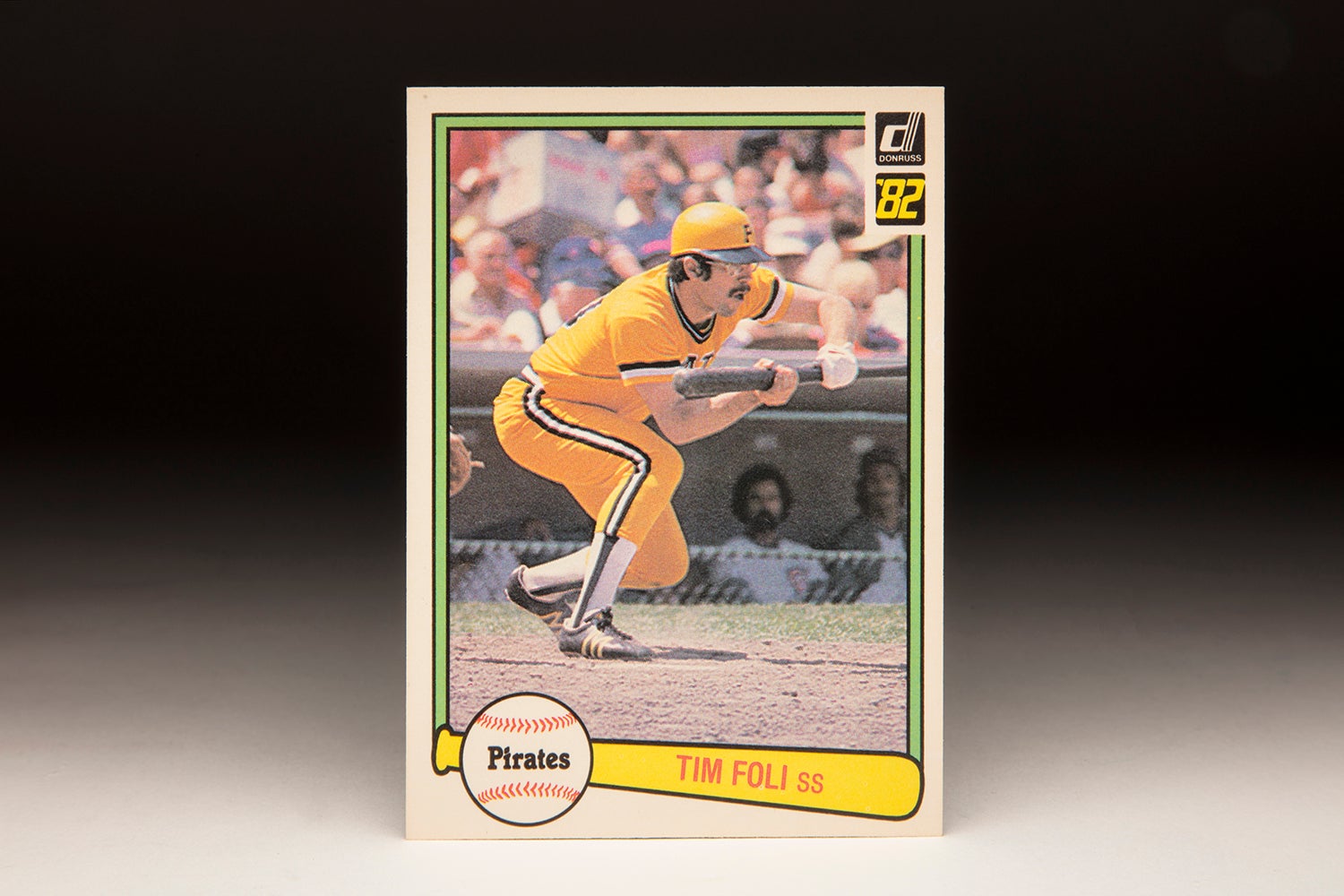
#CardCorner: 1982 Donruss Tim Foli
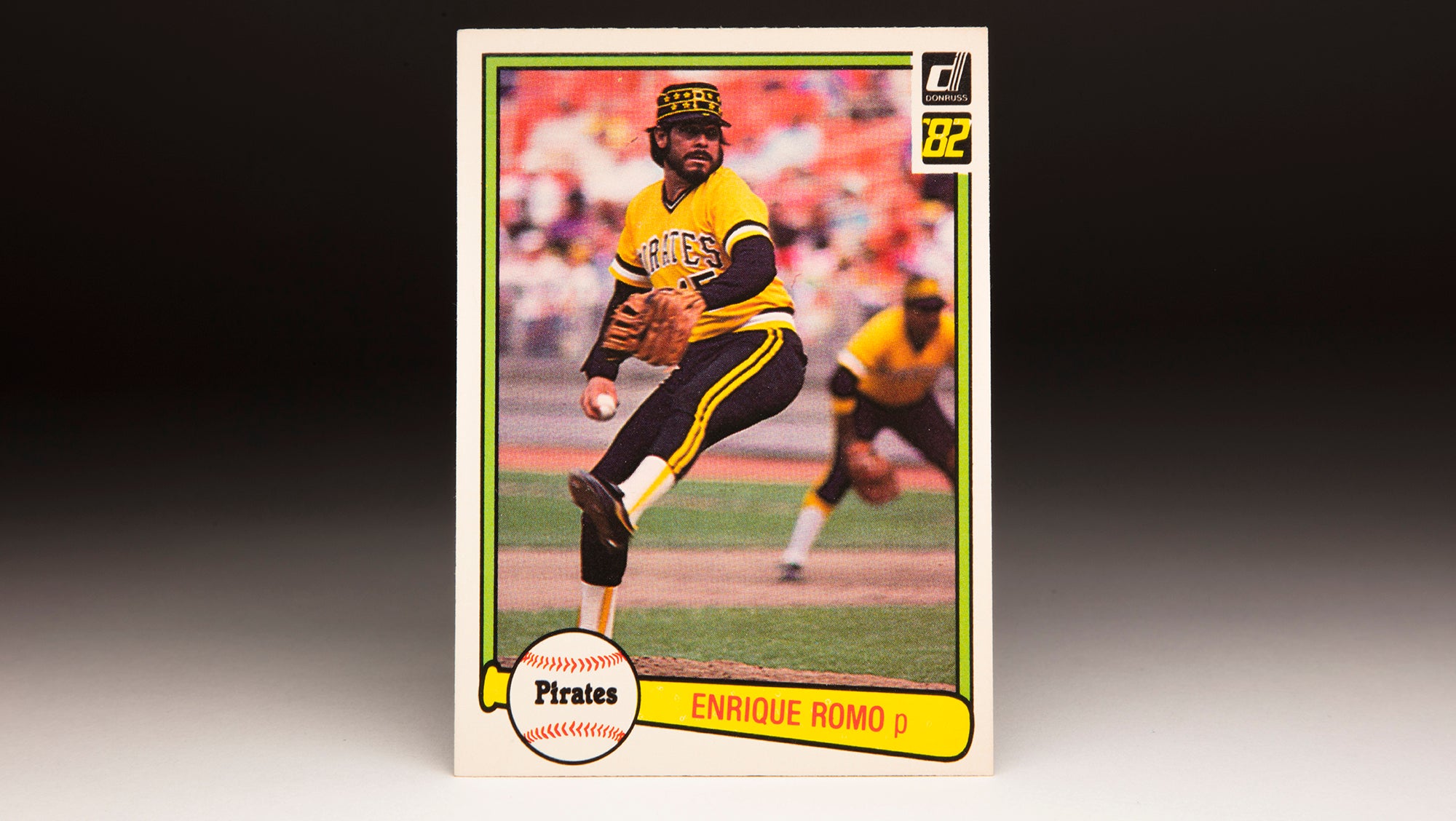
#CardCorner: 1982 Donruss Enrique Romo
#CardCorner: 1982 Topps Dick Davis
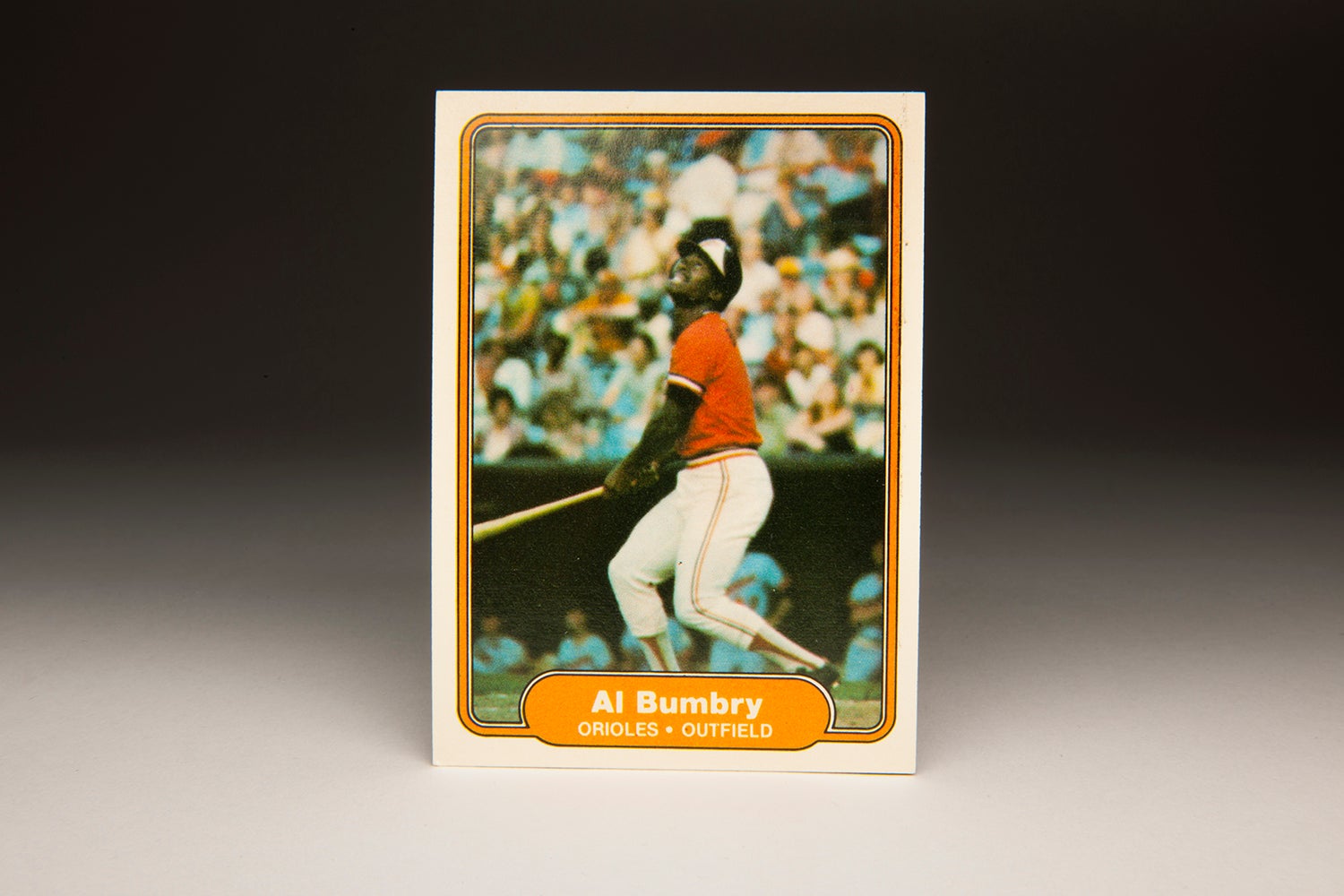
#CardCorner: 1982 Fleer Al Bumbry

#CardCorner: 1982 Donruss Tim Foli

#CardCorner: 1982 Donruss Enrique Romo
#CardCorner: 1982 Topps Dick Davis



